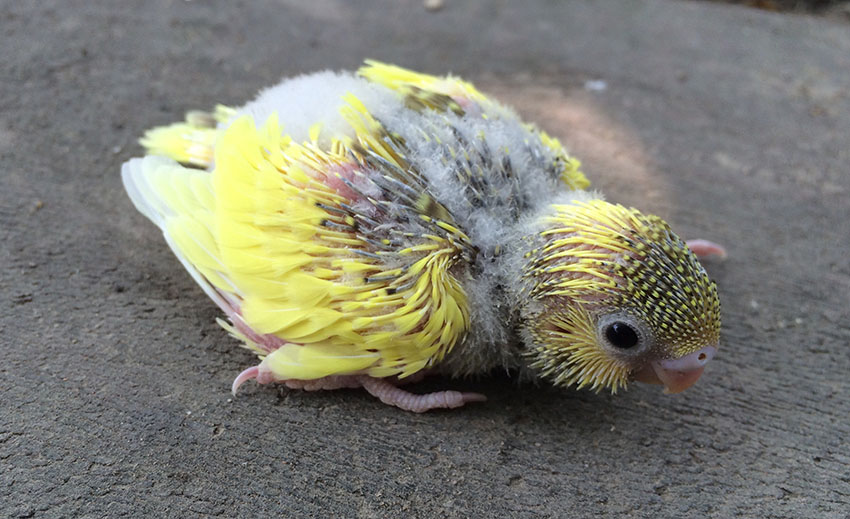Lifecycle Budgie
In the wild, budgerigars usually breed in response to rainfall (so you would imagine the breeding urge is always strong in UK aviaries!) This is generally between June and January, although they will seize the opportunity whenever it crops up. With water and food temporarily in abundance, the birds can take time out from their nomadic lifestyle and settle down. If the water and food supply allows, the birds will go with the flow and produce several broods one after the other.
Budgerigar nests are an object lesson in simplicity – a bare tree cavity with enough space to fit one adult and between five and eight white, circular eggs. Sometimes a fence post substitutes for a tree, and occasionally a log on the ground is chosen. It’s the female alone who sits on the clutch, with the male providing the duties of an eager-to-please waiter, bringing food for his partner. He regurgitates a porridge of leaves and seeds for her to feast on, and continues to bring food throughout the weaning period.

A wild budgie's nest in a eucalyptus tree
After 17-19 days, the eggs hatch, one at a time over a one-week period. Budgies are born naked, blind and helpless, like all parrots (and many other birds too). The first meal they receive is a liquid from the hen’s crop, sometimes referred to as budgie milk. This contains essential nutrients and antibodies, the avian equivalent of mammals’ milk. Nature has even equipped the hen to vary the contents and consistency of this fluid as she feeds her brood in the first week, from youngest to eldest, ensuring that each age group gets exactly the nutrients it needs.
From dawn until dusk the cock bird flies back and forth, filling his crop with seeds and regurgitating them for his mate, who then delivers the best of the crop to the chicks. The male begins to feed his offspring directly after about three weeks (although sometimes an over-protective female won’t allow this, and goes it alone for the entire fledging).
There are always birds of different sizes in the nest, as the hen staggers her egg-laying. Unlike in many species, where the later chicks are a kind of insurance policy, discarded if the first-born thrive, the survival chances of the younger budgies are very good. Once they are hatched, the hen instinctively feeds them first rather than the pushy elder members of the brood. In captivity these later eggs are sometimes removed and given to a surrogate broody pair to hatch.

Three-week-old budgie chick
At a year old, budgies are ready to breed, and the cycle begins again. As with any bird species which has both parents investing a considerable chunk of time in the rearing of young, a budgerigar couple are strongly bonded, with a ritual romance involving all manner of mutual grooming, beak ‘kissing’ and head bobbing.

Comments
Post a Comment